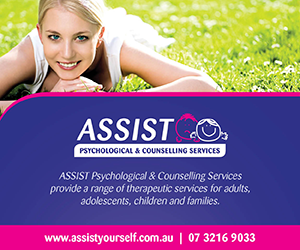Mental disorders are debilitating and often emerge in adolescence. Identifying these problems and intervening early helps reduce their impact on social, emotional and academic function, which, unheeded, can continue into adulthood.
But very few parents or teachers are qualified to assess mental health. And the substantial overlap between mental health problems and “usual” teenage behaviour makes any intervention more complicated.
A different role
The main role of teachers and parents in ensuring adolescents maintain good mental health, then, is to identify signs and risk factors that may indicate an underlying problem.
If they have any concerns, these adults should encourage the teenager to see a health professional. School counsellors can also assess and refer students who are at risk.
One thing teachers, parents and counsellors can do is ask the young person if she is all right. Teenagers who indicate they’re having difficulties should be taken seriously. Dismissing her problems may make the young person less likely to approach an adult for help in the future.
Health professionals, including general practitioners, psychologists and psychiatrists, are best equipped to assess whether a teenager has a mental health problem and provide treatment.
Part of the difficulty here is that many adolescent behaviours may indicate increased risk of mental illness, but they don’t mean the person has a mental disorder.
Signs of depression or anxiety include withdrawn or reduced social behaviour, low mood, poor school attendance, lethargy, impaired concentration, irrational or pessimistic thinking, loss of interest, irritability, anger, stomach problems, restlessness and increased worrying. These sometimes overlap with the negative attitude cultivated by rebelling teenagers.
Preoccupation with death, writing or talking about dying or self-harm, and engaging in self-harm are risk factors for suicidal ideation or suicide attempts.
Many adolescents exhibit these kinds of behaviours to some extent, which makes it difficult to discern “normal” teen behaviour from a mental health problem. An important clue is when a teenager is having ongoing problems, or when these behaviours are becoming more severe.
Teenagers at risk of mental health problems may also abuse substances, including alcohol, which often exacerbates depression or anxiety. Relationship problems, parental separation, experience of traumatic events and other social or family stressors may also increase risk for mental health problems.
Again, it’s the combination of risk factors and behaviours that indicates whether the adolescent might have a mental health problem. And health professionals are best placed to make an assessment.
More than one way
Getting professional help can reduce the impact of mental health problems, but there are several other effective approaches, such as school-based preventive programs. These include face-to-face and online programs that are based on cognitive behavioural therapy, which aims to make people aware of unhelpful thoughts and behaviours.
There’s substantial evidence that psychological programs like these can reduce the symptoms of depression and anxiety in young people and reduce the number of adolescents who will later need help.
Another classroom strategy is the use of educational programs that teach students the causes, signs and symptoms of depression and anxiety. Through mental health education, young people can better identify the signs that someone might be experiencing a problem.
Such knowledge can encourage adolescents to get help themselves or help their friends in times of need. Educational programs also make teenagers aware of the types of help available to them, and they can be delivered by trained educators or online.
Similarly, training school staff to recognise mental health problems and refer students to help may be effective. Peer-support programs that aim to connect young people with trusted adults have also shown promise in preventing suicide.
A number of changes can be made in the classroom or at home to help young people experiencing mental health problems. These include changes to classroom structure, flexible scheduling and providing additional time, instructions or resources. Developing students’ skills in goal setting, time management and problem solving may also help.
Identifying and referring at-risk teenagers is only one step to improving their mental health. Making preventative programs available and accommodating those experiencing problems can also lead to better social, emotional, health and academic outcomes.























